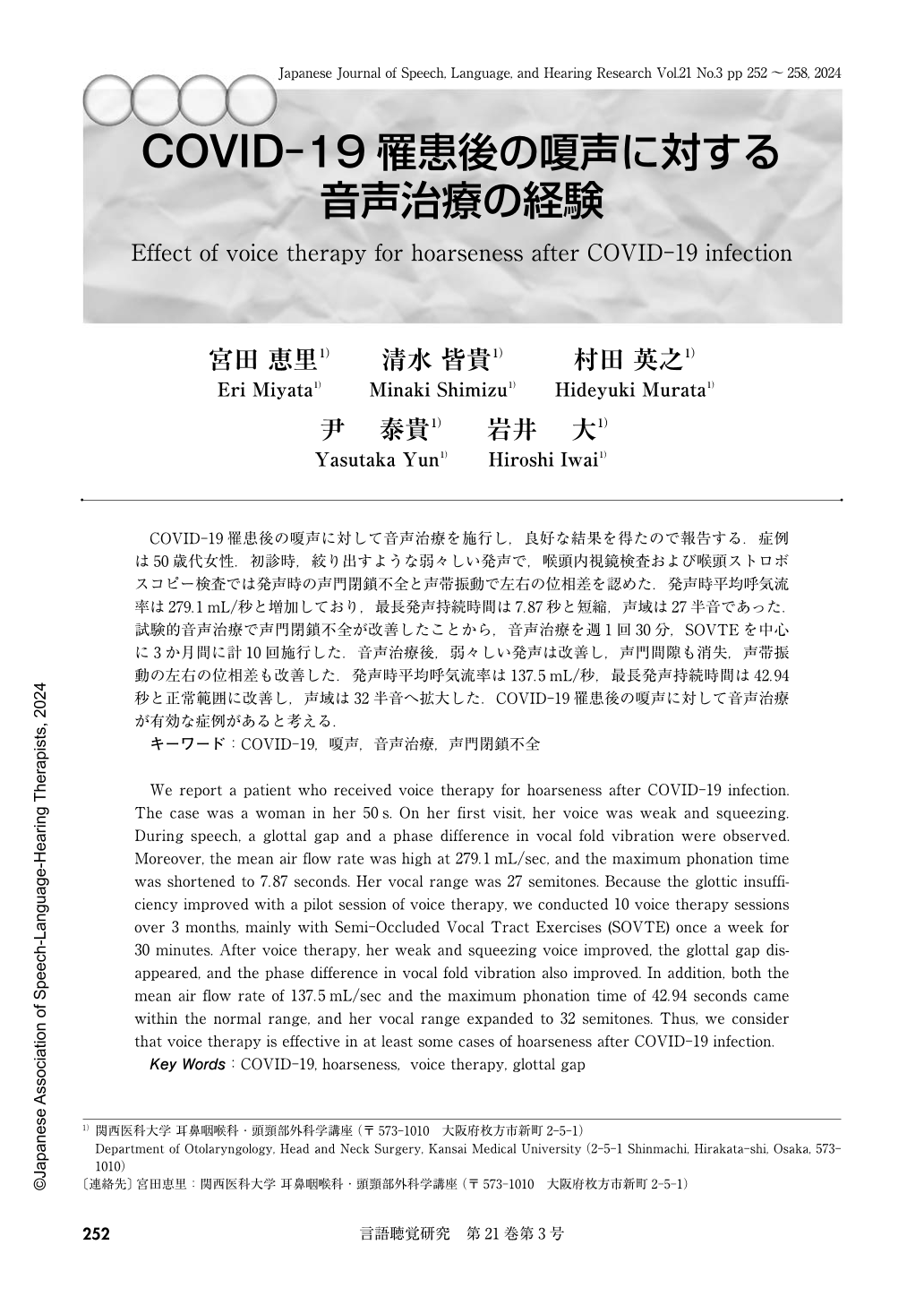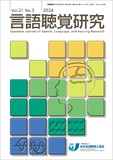Japanese
English
- 有料閲覧
- Abstract 文献概要
- 1ページ目 Look Inside
- 参考文献 Reference
COVID-19罹患後の嗄声に対して音声治療を施行し,良好な結果を得たので報告する.症例は50歳代女性.初診時,絞り出すような弱々しい発声で,喉頭内視鏡検査および喉頭ストロボスコピー検査では発声時の声門閉鎖不全と声帯振動で左右の位相差を認めた.発声時平均呼気流率は279.1mL/秒と増加しており,最長発声持続時間は7.87秒と短縮,声域は27半音であった.試験的音声治療で声門閉鎖不全が改善したことから,音声治療を週1回30分,SOVTEを中心に3か月間に計10回施行した.音声治療後,弱々しい発声は改善し,声門間隙も消失,声帯振動の左右の位相差も改善した.発声時平均呼気流率は137.5mL/秒,最長発声持続時間は42.94秒と正常範囲に改善し,声域は32半音へ拡大した.COVID-19罹患後の嗄声に対して音声治療が有効な症例があると考える.
We report a patient who received voice therapy for hoarseness after COVID-19 infection. The case was a woman in her 50s. On her first visit, her voice was weak and squeezing. During speech, a glottal gap and a phase difference in vocal fold vibration were observed. Moreover, the mean air flow rate was high at 279.1mL/sec, and the maximum phonation time was shortened to 7.87 seconds. Her vocal range was 27 semitones. Because the glottic insufficiency improved with a pilot session of voice therapy, we conducted 10 voice therapy sessions over 3 months, mainly with Semi-Occluded Vocal Tract Exercises (SOVTE) once a week for 30 minutes. After voice therapy, her weak and squeezing voice improved, the glottal gap disappeared, and the phase difference in vocal fold vibration also improved. In addition, both the mean air flow rate of 137.5mL/sec and the maximum phonation time of 42.94 seconds came within the normal range, and her vocal range expanded to 32 semitones. Thus, we consider that voice therapy is effective in at least some cases of hoarseness after COVID-19 infection.

Copyright © 2024, Japanese Association of Speech-Language-Hearing Therapists. All rights reserved.


